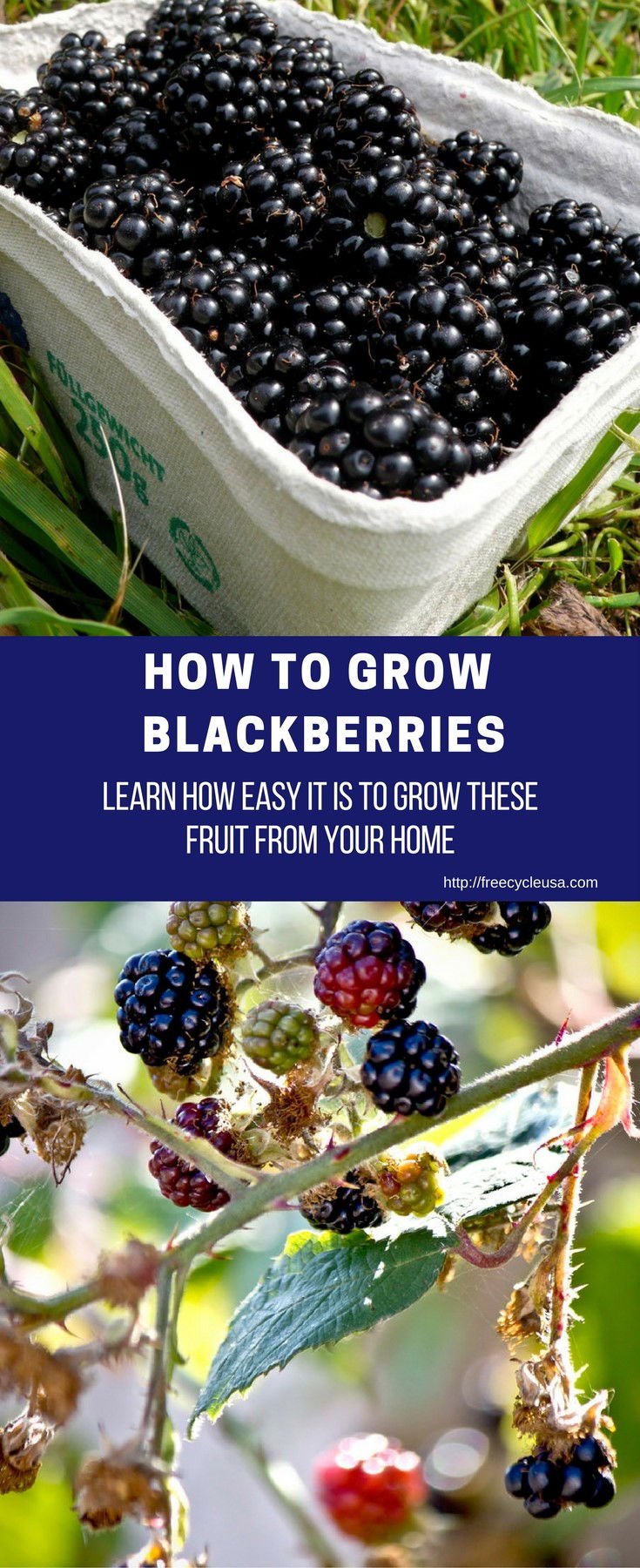Blackberries have been growing wild across Europe for hundreds, if not thousands of years. The wild bramble plant is often well-protected with spiky thorns and long trailing stems that trip unsuspecting woodland walkers! Blackberries can still be found in the wild, although should never be collected from the side of a road because of car pollution, or near any non-organic farms as sprays could have drifted over and affected the fruits.
Pick wild blackberries from higher branches to avoid animal contamination and watch those thorns – they are mean. Hybrid varieties of blackberry are designed for growing in a garden or even a large container. Thorn-less types are available and, although they made need a little extra TLC, they are safer to grow in a garden, especially where there are children playing.
Healthy Reasons
All berries are power packed super foods. Blackberries are high in vitamin C and anti-oxidants and really do help to keep your body healthy. Blackberry leaves, as well as the fruits, have been used medicinally for many years. Blackberry leaf tea is sold commercially as a tonic and pick-me-up – organic fresh leaves from your garden will do even more☺ A small cup of fresh blackberry leaf tea every day will help build the immune system and in turn help prevent colds and flu bugs.
Preparation
If you’ve ever taken over a neglected garden or piece of land, you will know how dangerous brambles can be. It’s tempting to plough the whole lot up, but if you have the space available it may be worth trying to train a few plants. Arm yourself with protective clothing and heavy duty gloves before you start though. Starting afresh is a lot less stressful.
Blackberry plants can be started from seed but it will be a good few years before you will have a crop of fruits and plants will need looking after during this time. Start your plants from cuttings or the layering method if you already have a healthy plant available. Or invest in a blackberry plant from your local garden supplier. There are many new hybrids on the market. Read through any specialist requirements before you buy.
Preparing the Land
Choose a fairly sunny well-drained spot in the garden. Dig over the ground early in the spring if you can, as soon as it’s workable. Check at this point that the soil is well-drained. Dig in some well-rotted manure or compost if the soil is tired or lacking in nutrients. Remove any perennial weeds, large stones and non-organic debris. Rake over and cover with black plastic or old rugs etc; until your plants are ready to put out. The covering should be removed a week or so before planting to allow the soil time to breathe. Fork over the soil lightly before planting. If the weather is too bad in early Spring, prepare your ground as you need it. Simply dig over when you’re ready to put the plants out. If you are growing in pots or containers, make sure they are well-drained, well positioned and filled with good organic fresh potting compost, or use your own compost if available.
LEARN THE EASIEST WAYS TO GROW BLACK BERRIES AND OTHER FRUITS AND VEGETABLES HERE!
Sowing & Growing
Check on the manufacturer’s sowing and growing recommendations before you start. Regional and variety needs will differ. It’s possible to germinate blackberry seeds, as most plants originally come from a seed – but it’s a long process and could be years before you get a crop of fruit. Buy a hybrid variety especially suited to small gardens or containers from a reputable local supplier. Some varieties are thorn-less but may need a little extra TLC. Hybrid blackberry plants will be less hardy than wild brambles. Or there are other ways to propagate if you have access to a healthy established plant:
- Layering
As with many woody plants, blackberries can be propagated by layering: Start with a healthy well-established plant with low growing branches. Choose the lowest healthiest branch and stretch out along the ground. Peg to the soil where it naturally touches the ground. Use a V shaped peg (part of a branch or something similar). Don’t use anything sharp as you may damage the branch.
Water well, and mulch during the winter months if it gets cold in your region. By the following spring the branch should be developing roots where you pegged it. If it’s growing well, cut from the main plant and allow to grow on. If it’s too close, the new plant can be transplanted. Do this carefully to avoid damaging the roots. You may have to wait a little longer than the following spring for the new plant to get going. Be patient and try not to move it too soon.
- Cuttings
Cuttings should be taken from a healthy plant after it has finished fruiting for the year. Cut lengths of stems and push the cut end into potting compost or well-prepared seed beds. Look after them through the winter. They will need watering if kept indoors, and probably protecting from the cold if outdoors. Always plant more cuttings than you’ll need. They don’t always work! Again, the following spring, the cuttings should have started developing roots. If the plants look healthy and are starting to produce leaf, then they are probably ready to move to their prepared spot in the garden. If not, be patient!
Planting Out
Allow about 18 inches (45cm) of growing space for each ‘cane’ you put out. Double check with manufacturer’s growing recommendations if you are buying plants from your garden supplier. If all the sunny spots are filled in the garden, blackberries will still develop fruits in the shade. However, new hybrid varieties may prefer more sun. Also, if you can find a sunny spot, the plant will produce larger sweeter fruits. Water well after planting and keep weeds away so that your plants get all the nutrients they need from the soil.
- Containers
Use large containers as blackberry plants need space to grow. Fill well-drained containers with fresh organic compost. They must be well-drained. Plants take nutrients from the soil, and the plant will benefit from a feed from time to time, and the soil should be renewed when re-potting.
Always remember to water pots and containers. Plants can’t find water when their roots are contained. And the soil often dries out more quickly in containers. This depends on where your plants are kept but generally care should be taken that container plants get enough water.
During the second year of growth, blackberry plants will probably start growing new canes. As fruit develops on the first year of growth, it’s wise to let these grow on as far as possible.
Plants can get unruly, and it’s wise to keep a check on their growth – prune regularly, after fruits have finished for the year and train branches to suit your space. Always double check the growing recommendations that come with hybrid blackberries as they may have specific pruning requirements.
Harvesting
Pick fruits as soon as they are ripe. They should fall into your hand at the slightest touch. A light hand is needed when collecting soft fruits as they squash very easily.
Storing
Blackberries will keep for a day or two if kept in the salad compartment of the fridge. They can be frozen but they will lose some texture and taste during the freezing process. Prepare and lay blackberries out on a tray and freeze quickly. Put into a suitable container, label and freeze. The most common way of storing blackberries is by making jam. There are probably hundreds of different jam recipes with blackberries.






